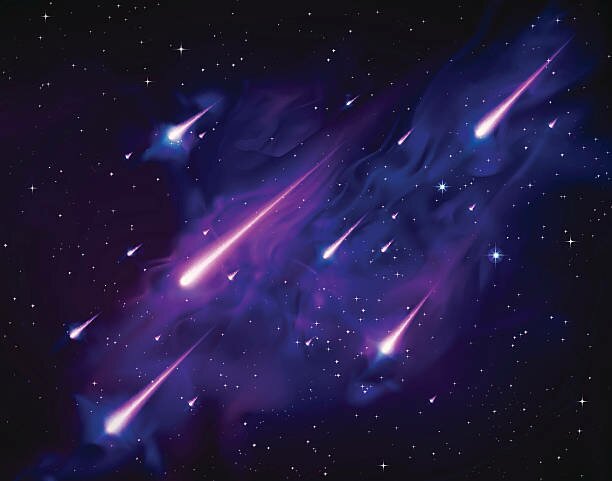How fast is a shooting star - Shooting stars are extremely fast having speeds of over 11-72 km/sec depending upon their size. They may cover over 120,000 miles in one hour.
A shooting star travels so fast that it heats up and glows up as it proceeds in the earth’s atmosphere.
But, have you ever wondered what makes a shooting star shoot? Or why do they move so fast? If yes, keep reading as you’ll find a lot of interesting facts about how fast is a shooting star in the subsequent sections.
What makes a shooting star shoot?
Well, that happens mostly due to the earth’s gravitational force.
But do you know shooting stars aren’t stars at all? Actually, they are small rocks and dust particles called meteors and meteorites that enter the earth’s atmosphere.
These particles and rocks are parts of other solar bodies like comets, asteroid belts, or debris. Whenever they enter the inner solar system, these particles occasionally cross their paths with our earth which is orbiting around the Sun.
As the earth catches them due to its gravity, these particles, now called the meteors, enter the earth at extremely high speed.
The air friction, onwards, makes them so heated and glowing that it seems like a star is shooting in the sky.
CLICK HERE TO FIND OUT MORE ABOUT LUNAR PHASE PRO!
Why do shooting stars move so fast? - How fast is a shooting star?
Well, there are a couple of reasons for it.
Firstly, they’re already revolving around the sun covering dozens of kilometers in a second to prevent themselves from falling into it. And, of course, there isn’t any dragging force there to cause friction.
Secondly, due to their small size, they’re accelerated by the Earth’s gravity strongly; the same as it pulls any other falling body.
Therefore, entering the atmosphere at a high speed and the gravitational action of the earth causes them to move at a speed of 11-72 km/sec.
And that’s too fast indeed!
Is a shooting star faster than the speed of light?
NO! Not at all.
No object is faster than the speed of light. A shooting star is just a small dust particle or a piece of rock. They can enter the earth’s atmosphere at a speed of 11,000 to 72,000 m/s.
But that’s much lesser than 300,000,000 m/s which is the speed of light.
In fact, the reason that it could be seen is none other than the light caused by its heating by the atmosphere. The glow produced by it reaches our eyes before this little bugger burns away. And that time is too short.
